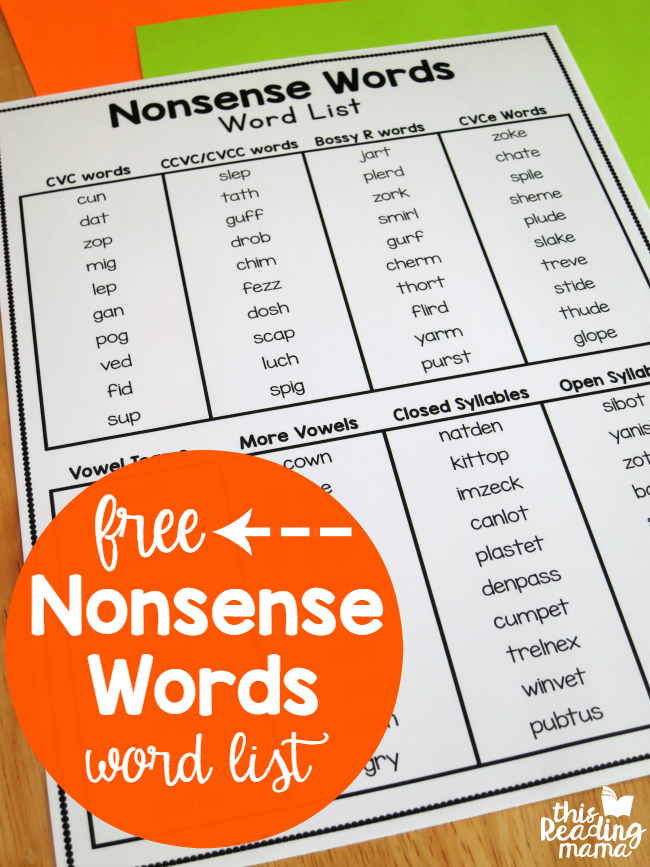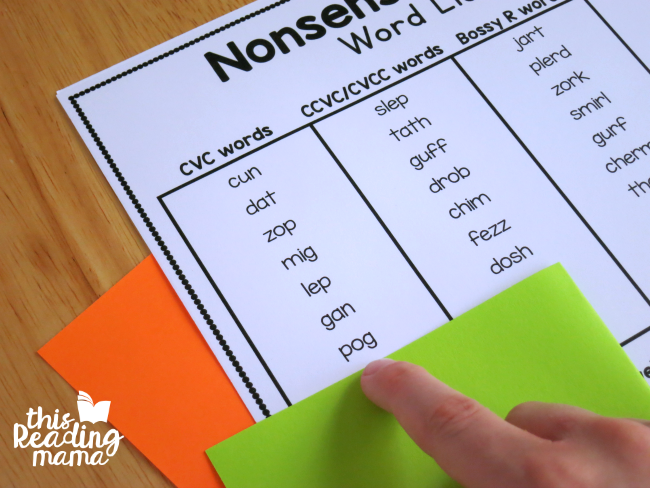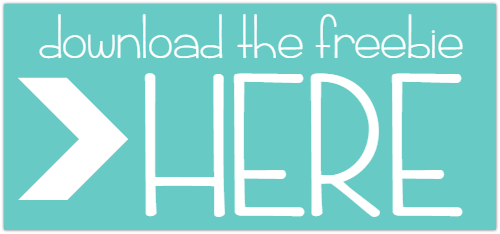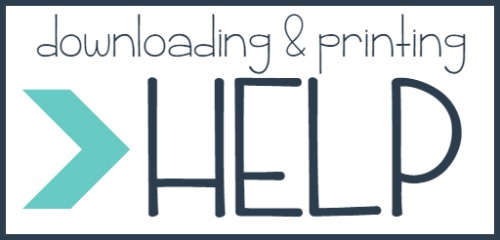Mig. Nup. Clag. These are nonsense words. I’ve been using them with readers for 12+ years now. And I’ve been asked several times why I do.
So today, I’m tackling the subject of using nonsense words {and defending them…to a degree} with readers.
Be sure to click on the teal download button to grab a printable nonsense word list.

Using Nonsense Words with Readers
Yes. It’s obvious. We don’t use nonsense words {also known as pseudo words} when we read. So why in the world would I ever suggest we use them with readers?
Let’s take a look at decoding for a second. By the way, decoding a word is just a fancy way of saying a learner can correctly deconstruct and reconstruct a word to pronounce it correctly.
Decoding a word is mix of two things important skills:
1- understanding that letters/letter combos make certain sounds and
2- understanding how to manipulate and blend those sounds together to make a word.
What’s interesting to me is that I’ve watched skilled, young readers tear through a list of real words without even batting an eye.
This is mostly because they know many of the words by sight. How do I know this?
Because when I give them a list of nonsense words with similar patterns, I see {and hear} the wheels turning a bit more. They have to think a little deeper about the patterns in the word and what sound they create. Then they have to blend those together to form the word.
I love observing the process readers go through when they are trying to decode those made up words. These are observations I believe I would have missed if I only used real words.

If you scroll down, you’ll see a teal download button where you can download this free nonsense word list!
The word list is broken down into 8 different phonics categories so you can differentiate better:
1. CVC Words
2. CCVC/CVCC Words
3. Bossy R Words
4. CVCe Words (Silent e)
5. Long Vowel Teams
6. More Vowel Teams
7. Closed Syllables
8. Open Syllables
Use a cover sheet to cover the words. Readers uncover one word at a time and decode or “read” it. Print an extra copy if you want to use it as an assessment piece. Just write the child’s name and dates of assessment at the top of your copy.
So, Are there Problems with Using Nonsense Words?
Yes. Why, yes there are.
1. There are several popular assessments that use nonsense words inappropriately, in my personal opinion. How? Nonsense words need to mirror the pattern of real words.
For example, the ability to decode words like lev or coj have no true value, because we don’t have words in the English language that end with just v or j. Decoding a word like mig or nup would have value because these words mirror patterns you find in real words such as wig or cup.
2. While using silly words in instruction is okay, I would caution against using them too much. The observations you make when a child is reading made up words can give you guidance in planning your phonics instruction with real words.
3. Make sure readers understand that these are nonsense words. They’re NOT going to make sense. Instruct them not to try to make them sound like real words.
You May Also Like
Phonics Word ListQuick Phonics Assessment
Enjoy!
~Becky


I totally agree with you! It’s not so easy to read nonsense words!
I personally like to use them with my EFLs, no matter what their age. They take it as a game, but it’s interesting to see a teen or an adult have troubles reading 3 letter words that don’t mean anything. Suddenly, everything’s changed. Once it clicks, it goes very quickly, but watching them solve the problem is really something! (I love observing human behavior). You can almost hear them decoding and going over those letters as they try to make sense of them. Quite a challenge!
I use nonsense words for pronunciation and fluency with these students. I want them to achieve that confidence when dealing with this new language. English, contrary to Spanish, seems to break every spelling rule they’ve learned in school, so it’s quite difficult for them to read new words. In spanish, they actually pronounce every letter – except for an occasional silent one.
I’ve taken on the mission to solve these issues with the older crowd and make sure the young ones, and beginners, learn it from the beginning, so they don’t run into these problems in the future. Yep, I love going that extra mile for my students!
Anyway, I was wondering, do you have any more nonsense word material?
Thank you for all the great advice and freebies that you offer us continuously!
CVC nonsense words are valuable for readers when they learn syllabication. Sometimes when you put two nonsense CVC words together, they become a real word like bas + ket = basket.
Great point! 🙂
Now, this is going to sound silly, but how do I know if my child is reading the nonsense words correctly? Is there an “answer” sheet with the expected pronunciations?
That’s a great idea! I can work on that.
Thanks for posting this! I’ve been a resource teacher for three years now and haven’t learned the reason behind nonsense words. It’s in an official assessment I use and it’s always perplexed me as to why the kids could read the real words but had trouble with the nonsense words. I will definitely use this!
Yay! So glad my blog post helped you understand the importance of nonsense words. 🙂